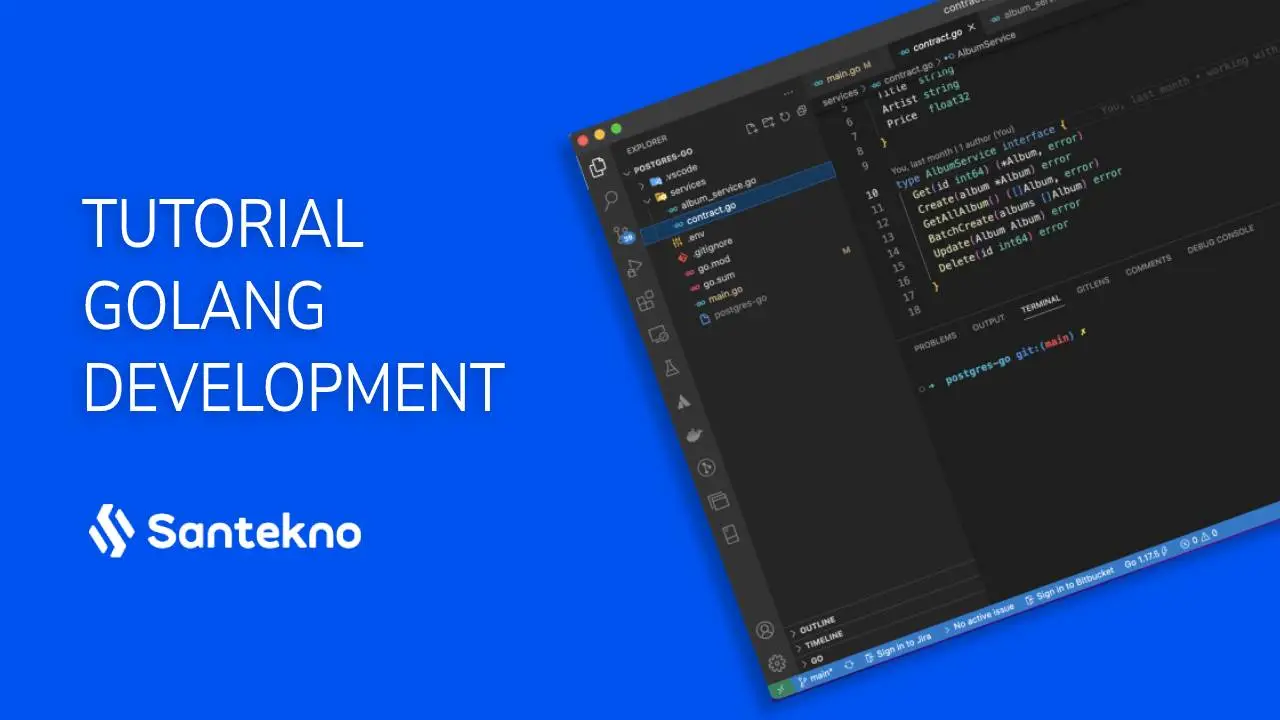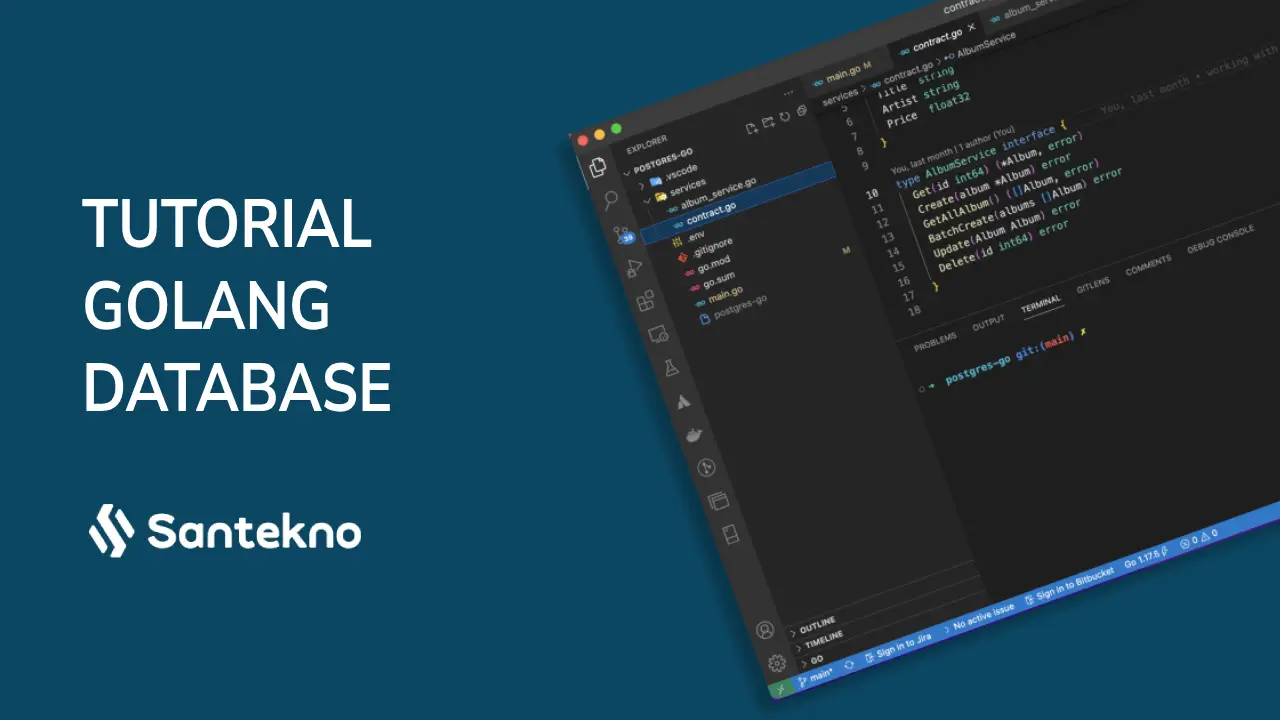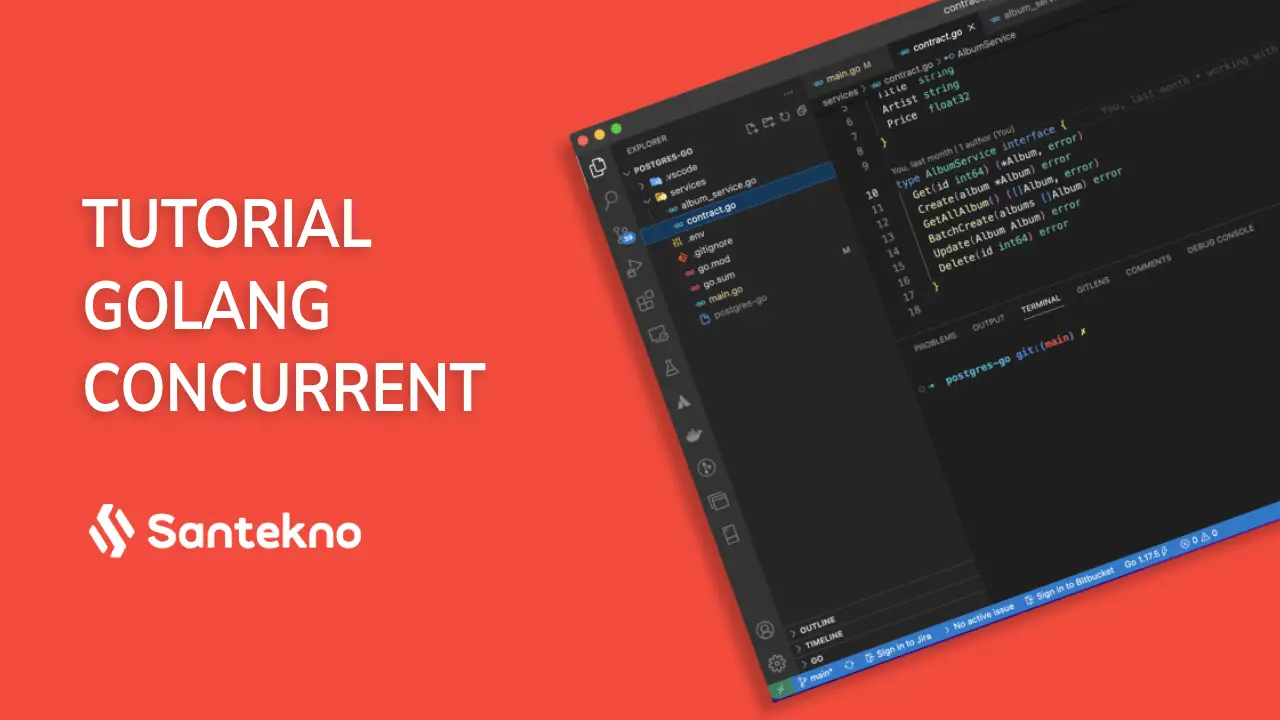Programming
109 Artikel tersedia

Introduction and Implementation of Golang Embed
Introduction to Embed Packages
Since Golang released version 1.16 there is a new feature called Embed. This embed package is a feature that makes it easier to open the contents of a file at compile time, automatically inserting the contents of the file into the variables that we have defined. For more details, you can see here.

Get to know the Repository Pattern in Golang
In the book Domain-Driven Design, Eric Evans explains that
Repository is a mechanism for encapsulating storage, retrieval and search behaviour, which emulates a collection of objects

How To Integrate Golang with MySQL Database
Introduction to Package Database
In Golang programming, by default it has a package called database. This package has a set of standard interfaces which provide standards for communication into the database so that we can immediately create the program that we will create using this package to access any type of database with the same code. But what will differ is that only the SQL query code is used according to the database used.

Recognizing Package Context With Timeout In Golang
Package introduction context.WithTimeout
In the previous article we learned context.WithCancel where we manually send the cancel signal from context. But we can also add cancel signal to context automatically by using timeout timings. By using timeout, we no longer need to manually call cancel execution, but with timeout cancel will be automatically executed if the timeout time has passed.

Getting to Know Package Context With Cancel On Golang
Package introduction context.WithCancel
Context which can add values, we can also add cancel signals to the context. Usually context cancel is used when we need to run another process, and we want to cancel the process. This context cancel is usually run using a different goroutine so that we easily want to cancel the execution of the goroutine, so we just send a cancel signal to the context then the goroutine we want to stop can be done.

Get to know Package Context With Value in Golang
Introduction to the context.WithValue package
At the beginning of the context explanation, we know that the context will be created for the first time during initialization using context.Background() or context.TODO(), where the context does not have a value, aka it is still empty. We can add values from a context with a concept like a map, namely [key - value].

Getting to Know Package Context in Golang
Introduction to package context
Context is a package that can store and carry data values, timeout signals and deadline signals. This context runs and is created per request. The context usually carries the value from initialization until the end of the process. This context is sometimes a necessity when we code a program so that from the beginning of the function to the next function the previous value can be used if the process in the next function requires data from the initial process.

Get to know the Package Ticker in Golang
Introduction to the time.Ticker package
This Golang package is a package that is used to repeat certain events which will continue to be repeated for a certain time. When this ticker has expired it will send a trigger or signal to the channel.

Get to know the Package Timer in Golang
Introduction to the time.Timer package
time.Timer is a package that deals with times or events that will occur when the process is executed. For example, we will provide a ‘delay’ for a few seconds to go to the next process or there is another scheme.

Knowing and Implementing Atomic Sync in Golang
Introduction to sync.Atomic
For atomic operations on variables in golang, the sync/atomic package offers certain low-level methods. In Go, these methods allow multiple goroutines to safely modify shared variables without using locks or other explicit synchronization. Functions like AddInt64, AddUint32, CompareAndSwapInt32, etc. used to perform basic arithmetic on different types of variables can be found in the atom package. The AddInt64 method for example, guarantees that modifications made by other goroutines will be seen when adding a certain value to an int64 variable in atomic style.

Getting to Know Sync Cond on Golang
Introduction of sync.Cond
sync.Cond is a locking process that is used with certain conditions. sync.Cond in the Golang synchronization package implements conditional variables that can be used in scenarios where multiple readers are waiting for concurrent resources. Cond pooling point: multiple goroutines waiting, 1 goroutine notification event occurs. Each Cond is associated with a Lock **(sync.Mutex or sync.RWMutex) that should be added when modifying the condition or calling the wait() method, to protect the condition.

Getting to Know Sync Once On Golang
Introduction of sync.Once
We can use this feature in Golang to ensure that a function is executed only once. Sometimes if we already have many goroutines that are accessing, then with sync.Once we can make sure that only the goroutine that has the first access can execute the function. So if there are other goroutines that are running, they will not execute and ignore the function.